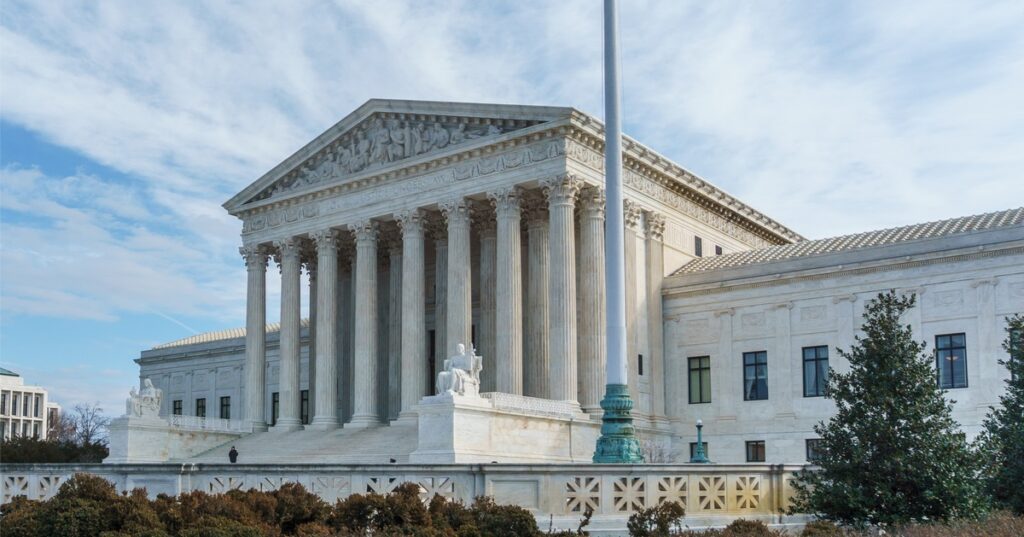Just over two years after the Supreme Court barred race-based preferences in college admissions, enrollment patterns at elite institutions shifted in ways that have sparked debate about fairness, outcomes, and what actually helps disadvantaged students succeed. This piece looks at the data on changing demographics, reactions from analysts on both sides, and an argument that the old system may have harmed the very groups it aimed to help. Numbers show clear shifts in who gets into top schools, and that has people on the right arguing the court did the right thing. Expect a straightforward take that weighs results, quotes experts exactly as stated, and keeps the facts front and center.
The Supreme Court’s landmark decision has since resulted in more Asian students being admitted to elite universities while African American enrollment has gone down. That adjustment in admissions followed the high court ruling just over two years ago that use of racial preferences in college admissions was unconstitutional. The change has produced measurable effects at many of the most selective colleges in the country.
An Associated Press analysis of enrollment at 20 prestigious universities shows a consistent trend: the share of incoming Black students fell at nearly every school tracked. Several institutions saw their Black enrollment drop significantly, and a few experienced declines of about half compared with past classes. These shifts are not small blips; they represent major changes in the makeup of incoming classes.
One of the sharpest declines occurred at the California Institute of Technology, where African American enrollment slipped from 5% to 1.6%. At the same time, incoming Asian freshmen increased at 14 of the 16 colleges that reported a rise. Columbia University recorded the steepest climb in the Asian share, moving from 30% to 39% among new students.
On the left, some analysts see these trends as proof the decision had harmful effects on equity goals. Madison Weiss, senior analyst for Higher Education Policy at the Center for American Progress, argued that “[t]he recent decline in Black student enrollment at elite institutions is not [an] accident.” She went on to say, “It reflects the very predictable and deeply troubling consequences of dismantling one of our nation’s most effective tools for equity.”
Weiss also insisted that “Institutions can and must use every race-neutral tool available to promote diversity and equity.” That is a predictable response from advocates who favor ongoing interventions to preserve campus diversity after the court ruling. But the response raises hard questions about which interventions are actually effective for long-term success.
Critics of race-based admissions, many on the right and some skeptical conservatives and scholars, have argued the old system produced perverse results. The Pacific Legal Foundation highlighted the work of Columbia professor John McWhorter, who contends that racial preferences sometimes placed students into environments where they were less likely to thrive. McWhorter has been vocal about the unintended consequences of assigning students to seats at ultra-competitive schools where the match may be poor.
McWhorter laid out his case in the 2021 book titled, Woke Racism: How a New Religion Has Betrayed Black America, arguing that the old logic of preferential admission was flawed. He observed that rhetoric around “affirmative action implies that the choice is somehow between Yale or jail” before noting how “the alternative to ‘Yale’ is a lower-tier university that might better position the student for success.” That point highlights a trade-off too often ignored in the debate about prestige and outcomes.
Supporters of race-neutral approaches point to studies suggesting mismatches can hurt completion rates in demanding fields like STEM, where preparation matters a great deal. One frequently cited analysis from Duke University in 2015 found that steering students into the most rigorous STEM programs without sufficient foundation can reduce the number who finish as scientists. That research is used to argue for putting emphasis on fit and preparation rather than just slotting students into top-ranked programs on the basis of race.
Those on the right also say the law needs to be clear and consistent: if admissions should avoid race, then admissions offices must build better tools that evaluate applicants without demographic shortcuts. The argument is not that diversity is unimportant, but that methods should respect the Constitution and focus on measures that actually increase upward mobility. Race-neutral tools and outreach, improved K-12 pipelines, and merit-based scholarships are presented as alternatives that can raise opportunity without constitutional overreach.
Meanwhile, defenders of the pre-ruling approach warn that eliminating race as a factor puts low-income and minority applicants at a disadvantage unless colleges take aggressive, race-neutral steps to replace the lost effects. That concern has driven calls for institutions to refine legacy, geographic, and socioeconomic policies to keep classes varied. The dispute now is over which path produces better, longer-lasting results for students.
The data on admissions shifts is clear enough to fuel political argument: conservatives say the court corrected an unconstitutional practice and that outcomes will be improved by focusing on fit and preparation. Progressives say the court removed a necessary tool for equity and that immediate remedies must follow. The real test will be whether colleges respond with policies that raise completion rates and economic mobility for the students who need it most.
For policymakers and college leaders, the choice now is concrete: double down on race-neutral reforms and invest in foundations that prepare students for demanding majors, or seek alternative ways to rebuild diversity without breaching constitutional limits. The debate will continue, but the numbers already show the ruling changed admissions in measurable ways. Those shifts will be debated in courtrooms, on campuses, and in statehouses for years to come.



